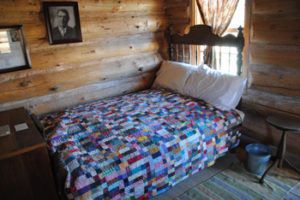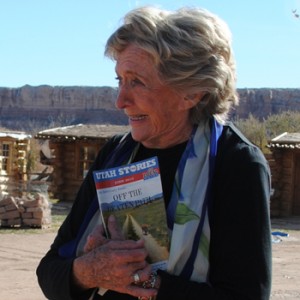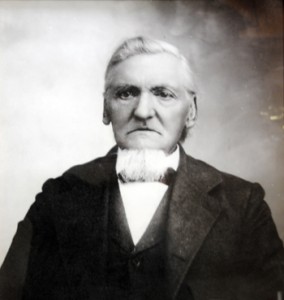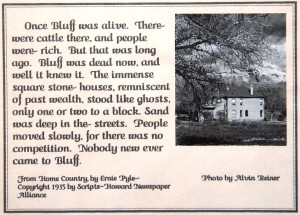What is an undiscovered secret to most people in Utah, Bluff is home to thousands of Anasazi ruins including “Newspaper Rock” Which offers hundreds of Anasazi pictographs.
The area was visited frequently for its perennial springs. The Anasazi Indians were the ancestors of the Hopi.
“Anasazi” is a Navajo word that, depending on pronunciation, can mean “enemy ancestors” or “ancient people who are not us.”

Mormon Pioneers settled in Bluff in 1880 by an order given originally from Brigham Young. The mission was to make peace with the Navajo Indians and convert them to the church and expand the Kingdom of Zion. Nearly all of the original 240 Mormon settlers had moved away by the 1930s.

There has been an effort in recent years to preserve the pioneer history by building a replica of the original group of cabins very similar to those that the Pioneers inhabited. “Fort Bluff” has been spearheaded by Corinne Nielson Roring

“It’s finding our roots. The younger generation doesn’t realize that [the
original pioneers] chiseled their way to Bluff.” Several large monuments stand in Fort Bluff that tell the story of “Hole in the Rock” when Pioneers who were misinformed by a scout were required to chisel and widen a crack in a canyon in order to descend down a cliff with wagons to the Bluff settlement
Today Corinne is working with volunteers and descendents of the original Pioneers building 25 small log cabins. The project includes a very accurate replica of the original schoolhouse and church (see photos).
Once Bluff was alive, There were cattle there, and people were rich. But that was a long ago. Bluff was dead now, and well it knew it. The immense square stone houses, reminiscent of past wealth, stood like a ghosts, only one or two to a block. Sand was deep in the streets. People moved slowly, for there was no competition. Nobody new ever came in Bluff.
– from Home Country 1935 by Scripts Howard Newspaper Alliance



